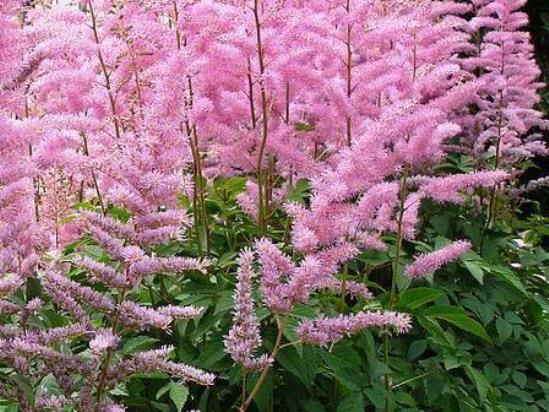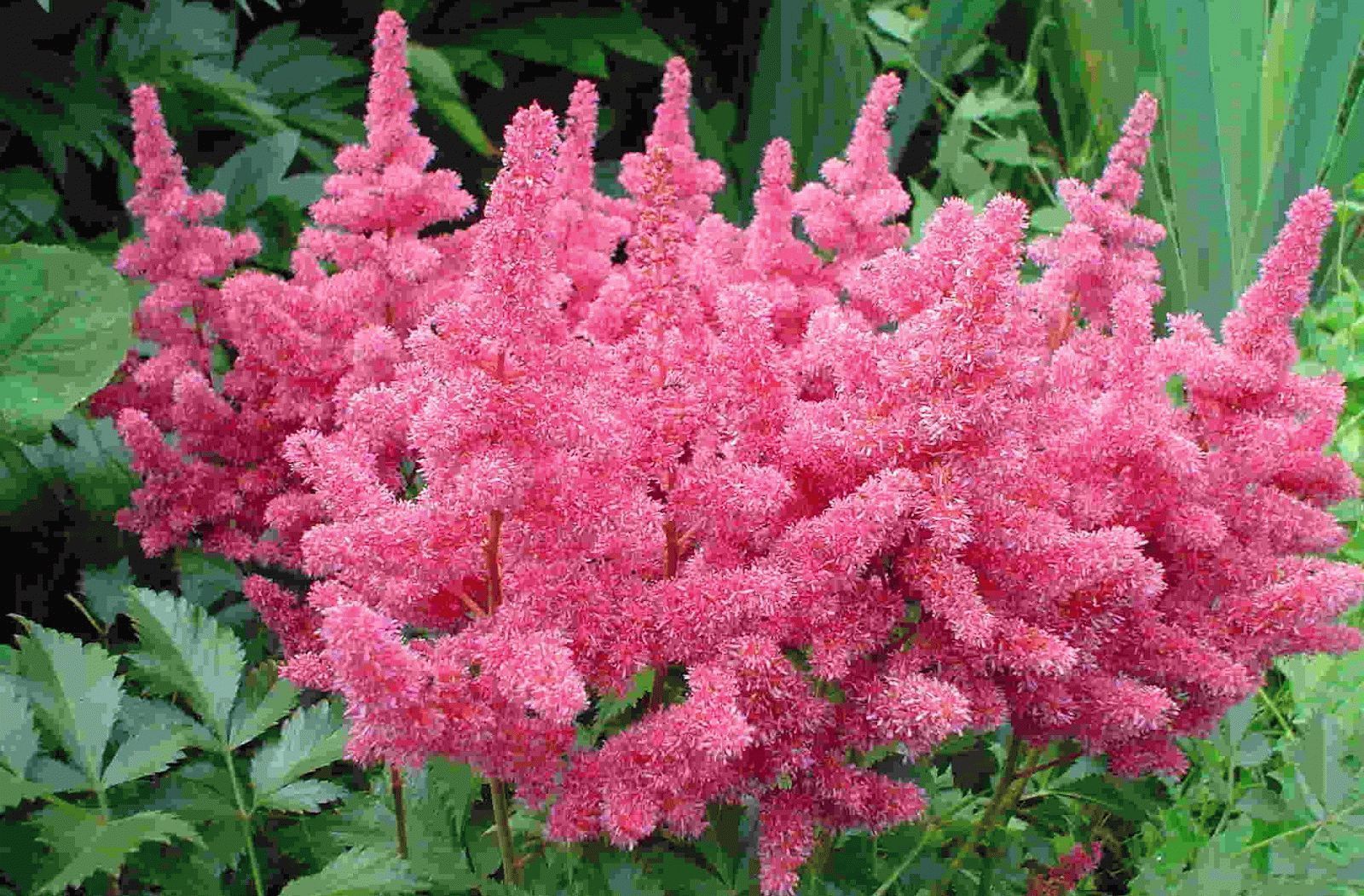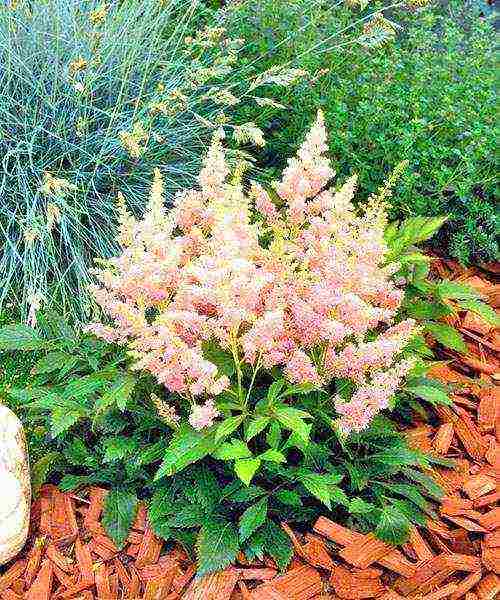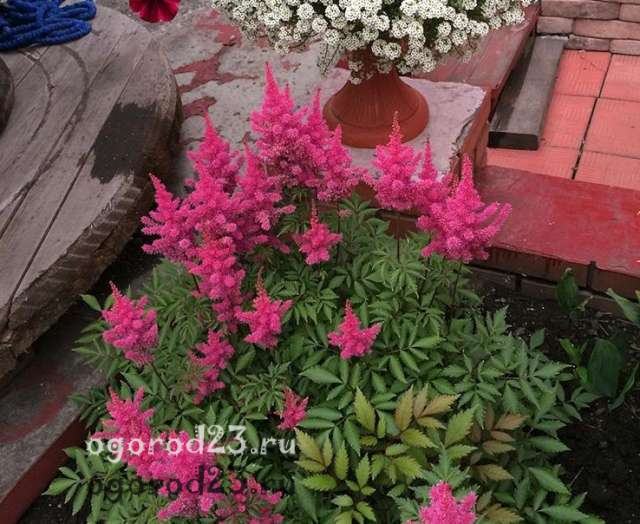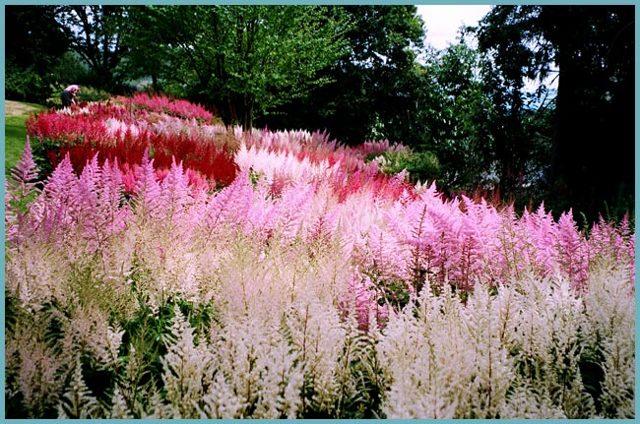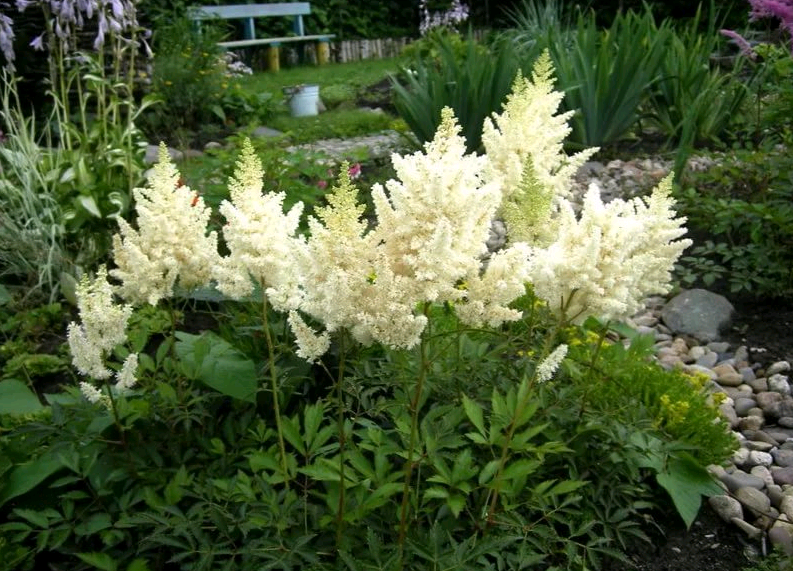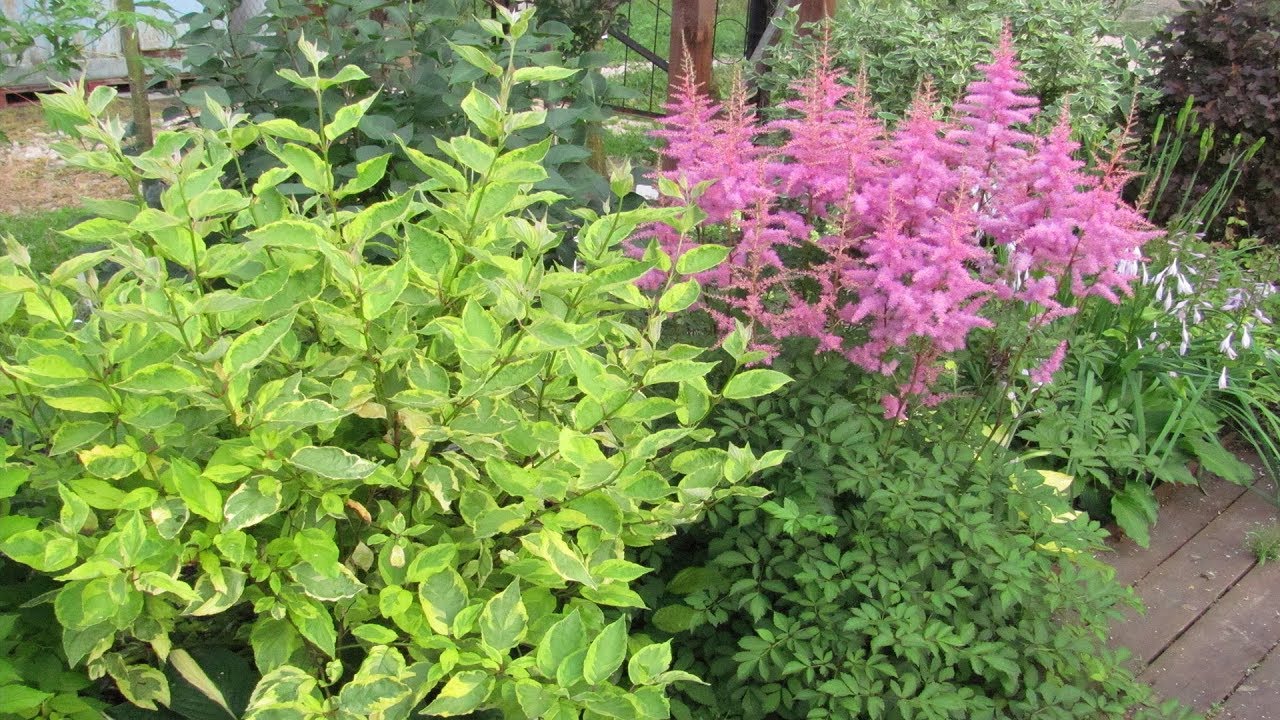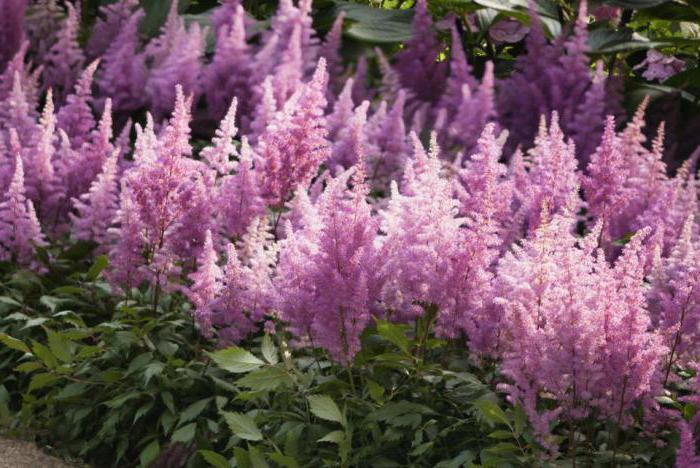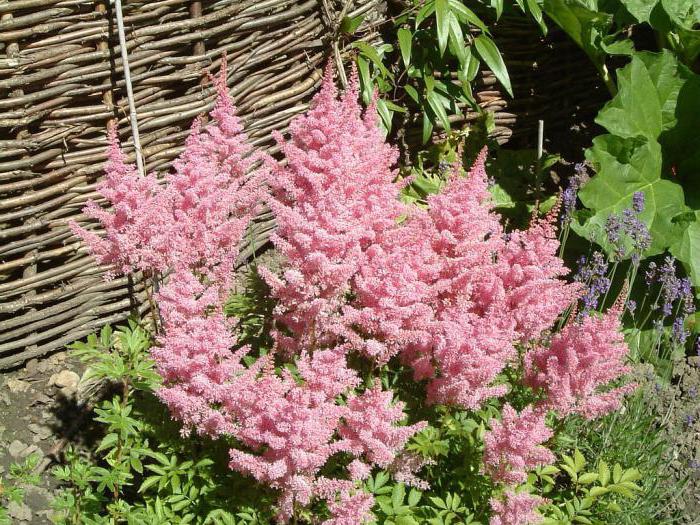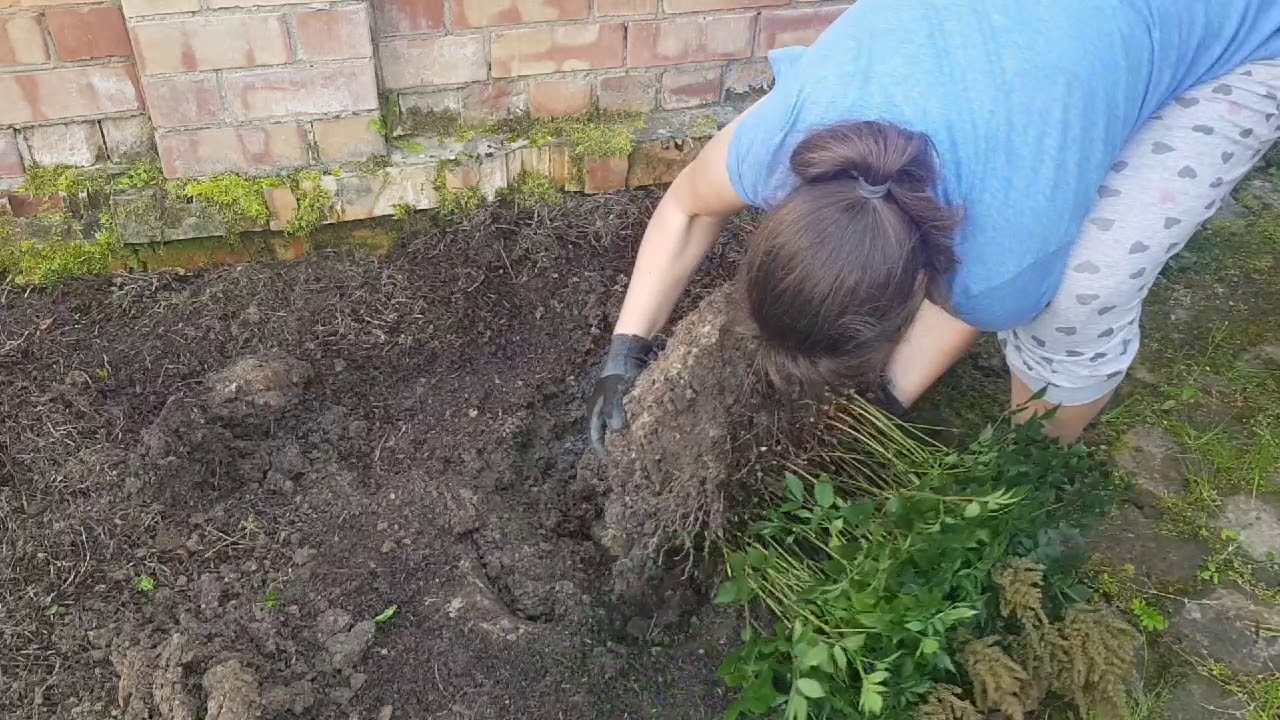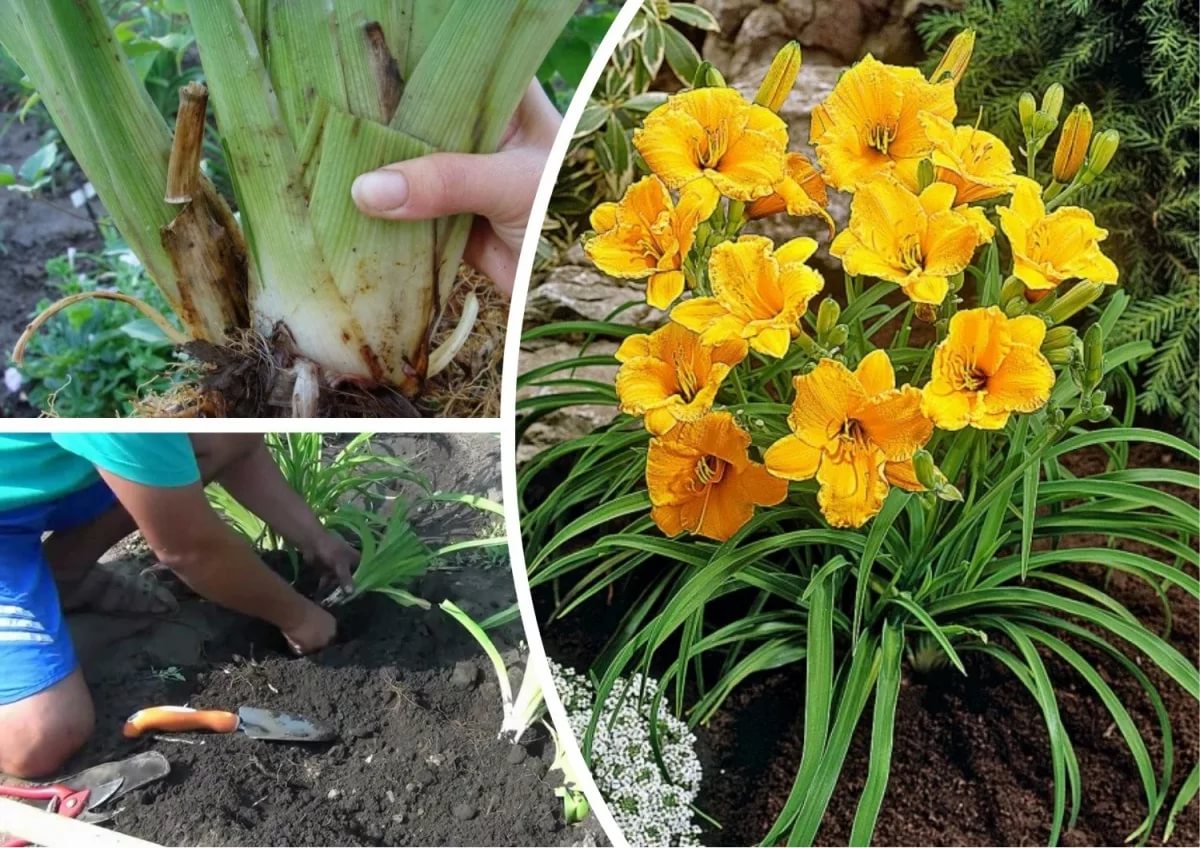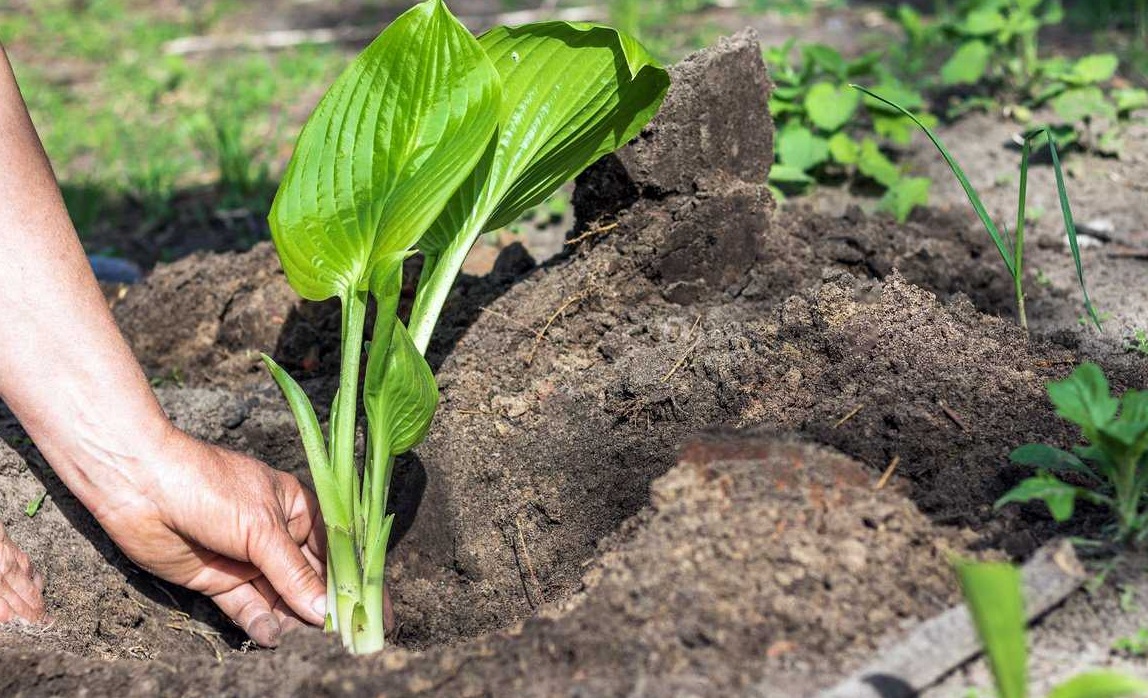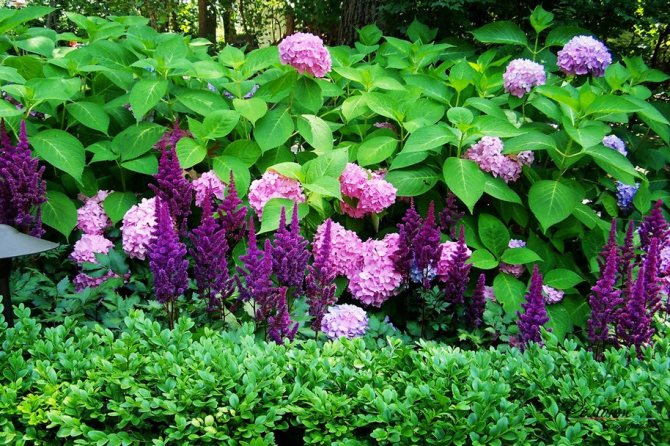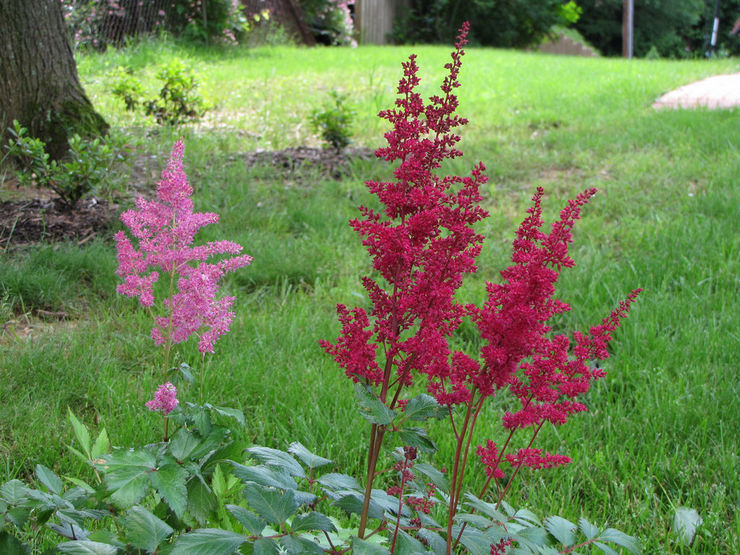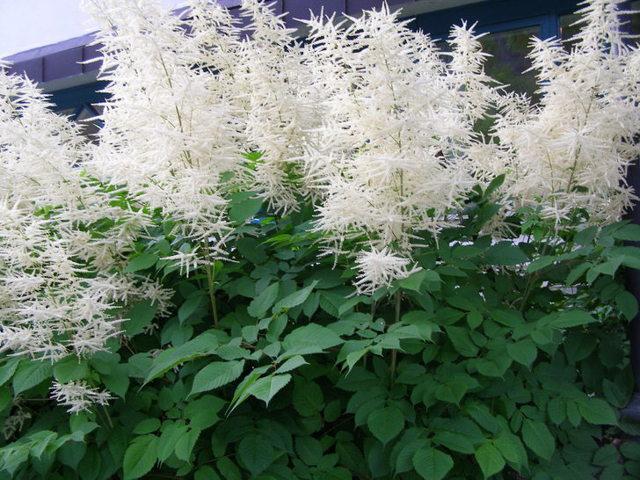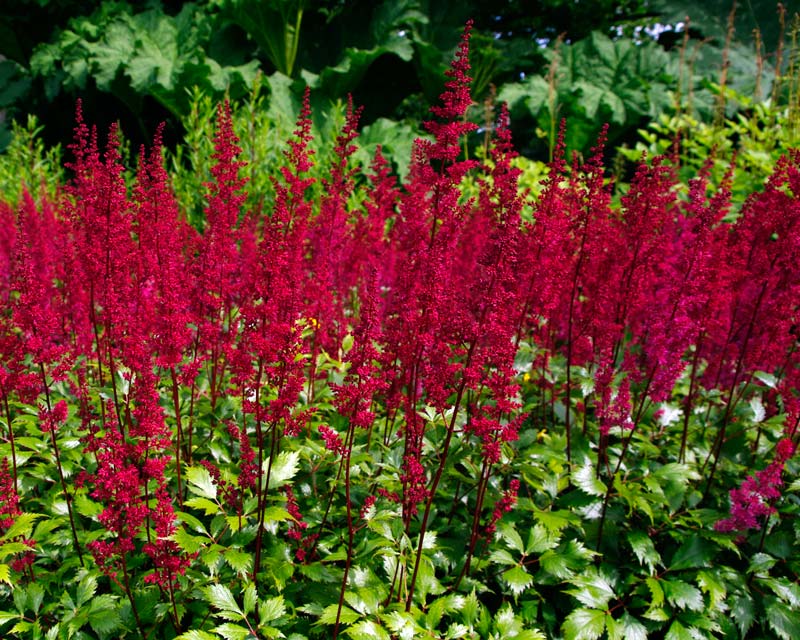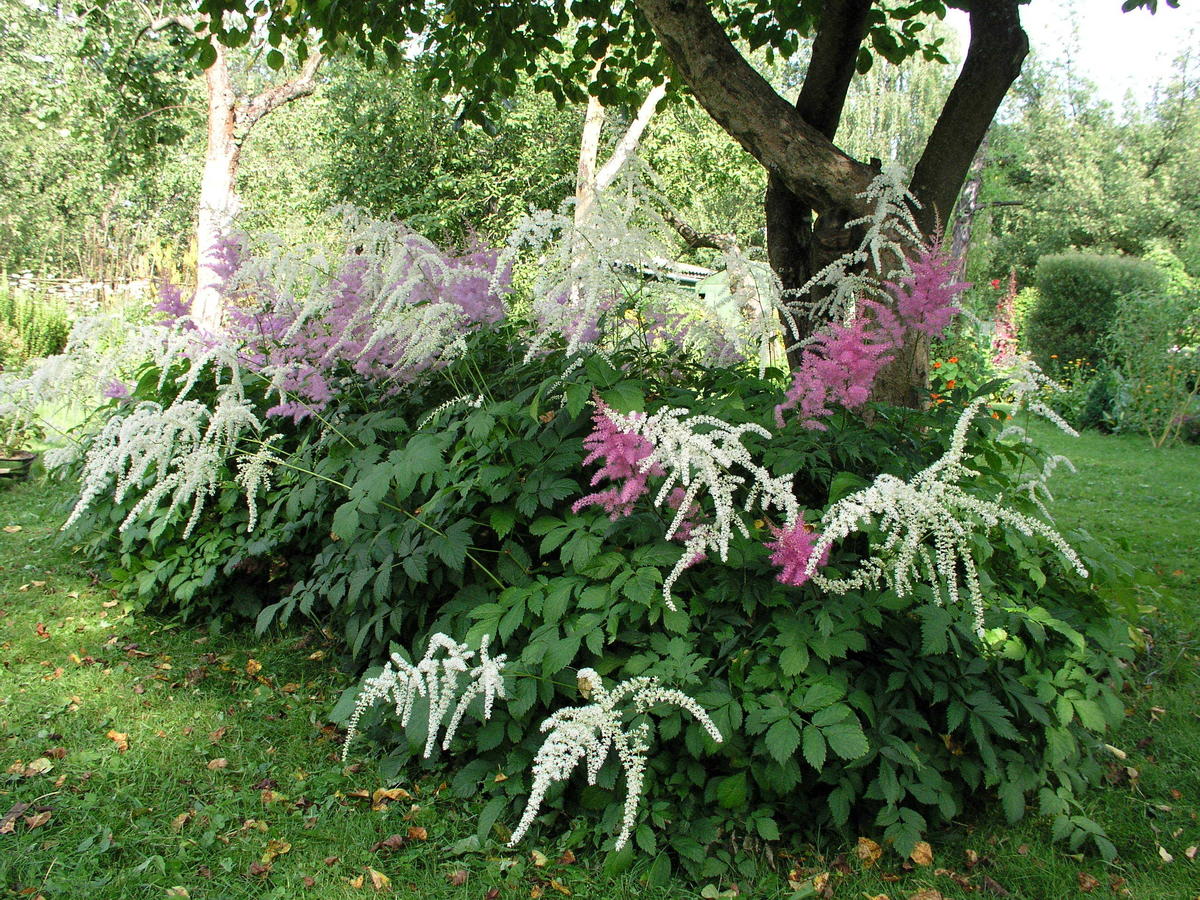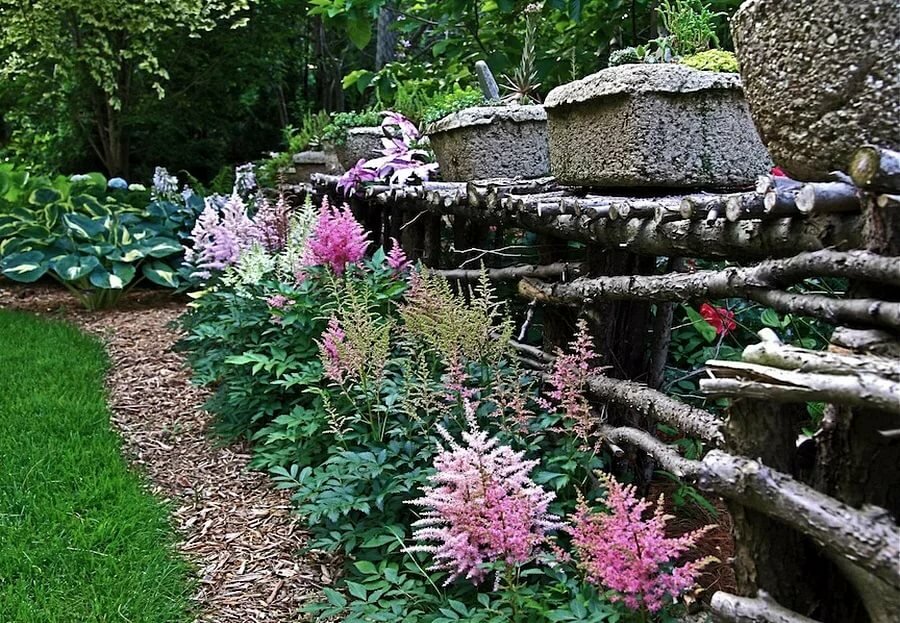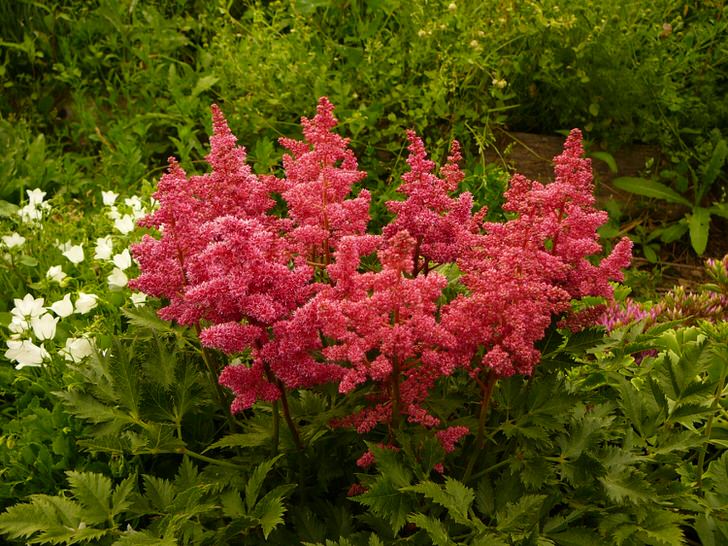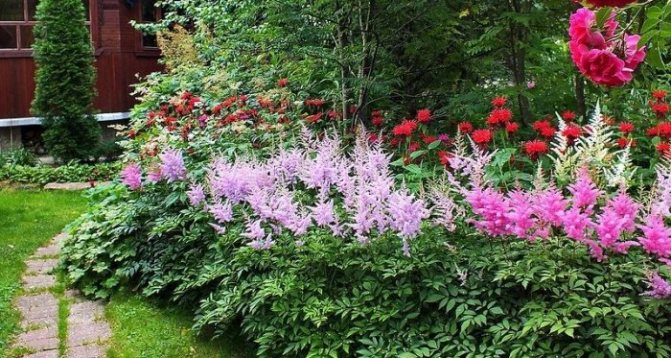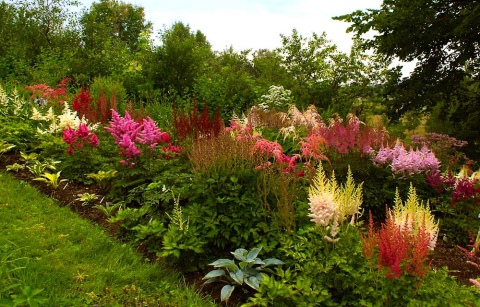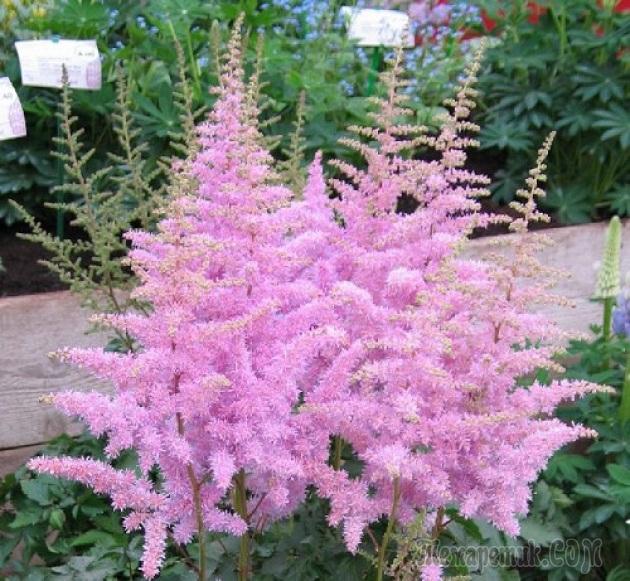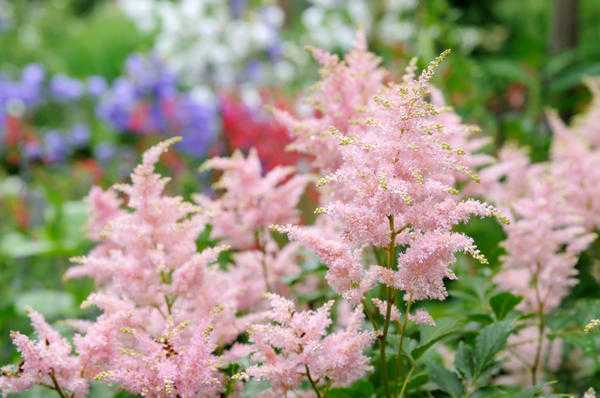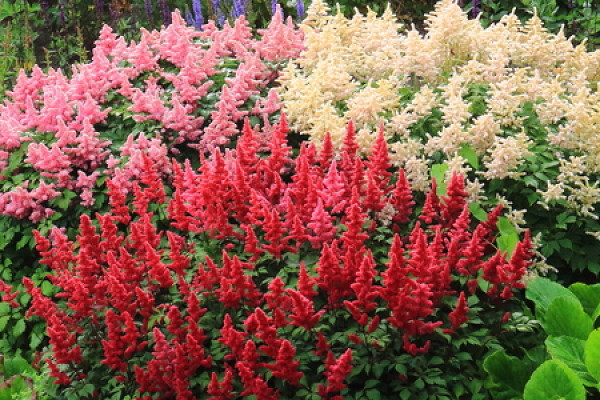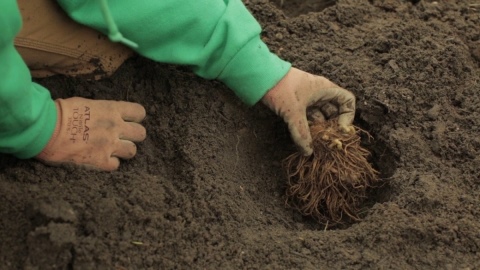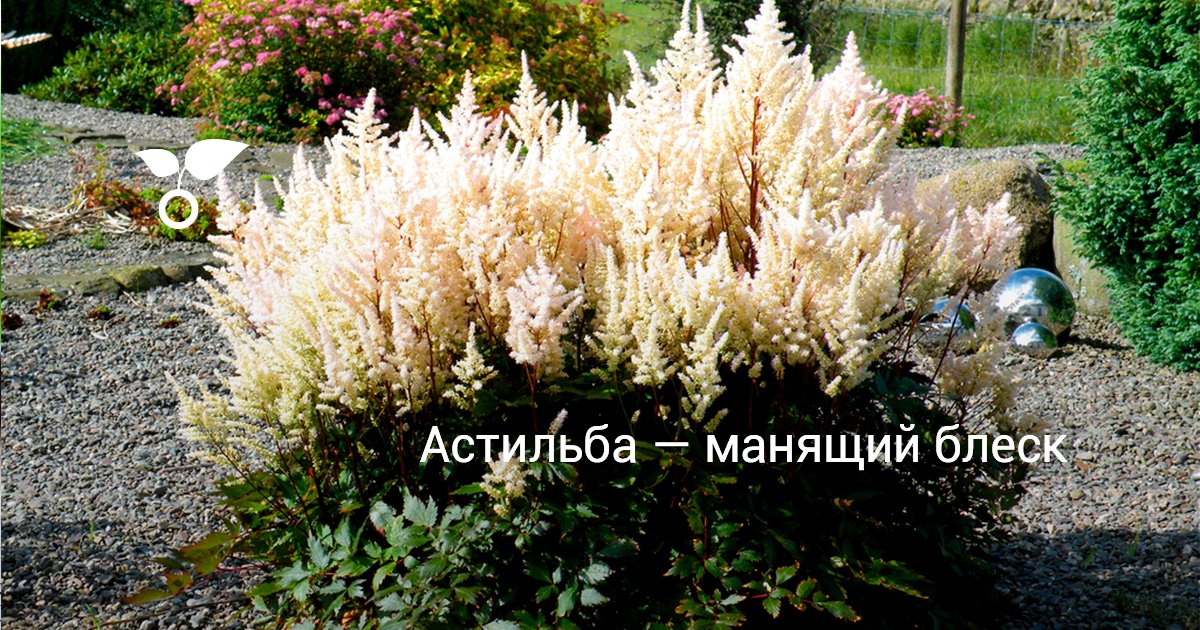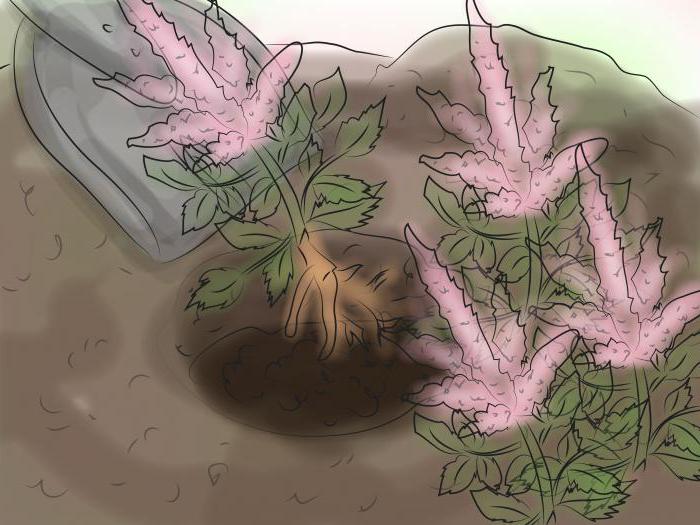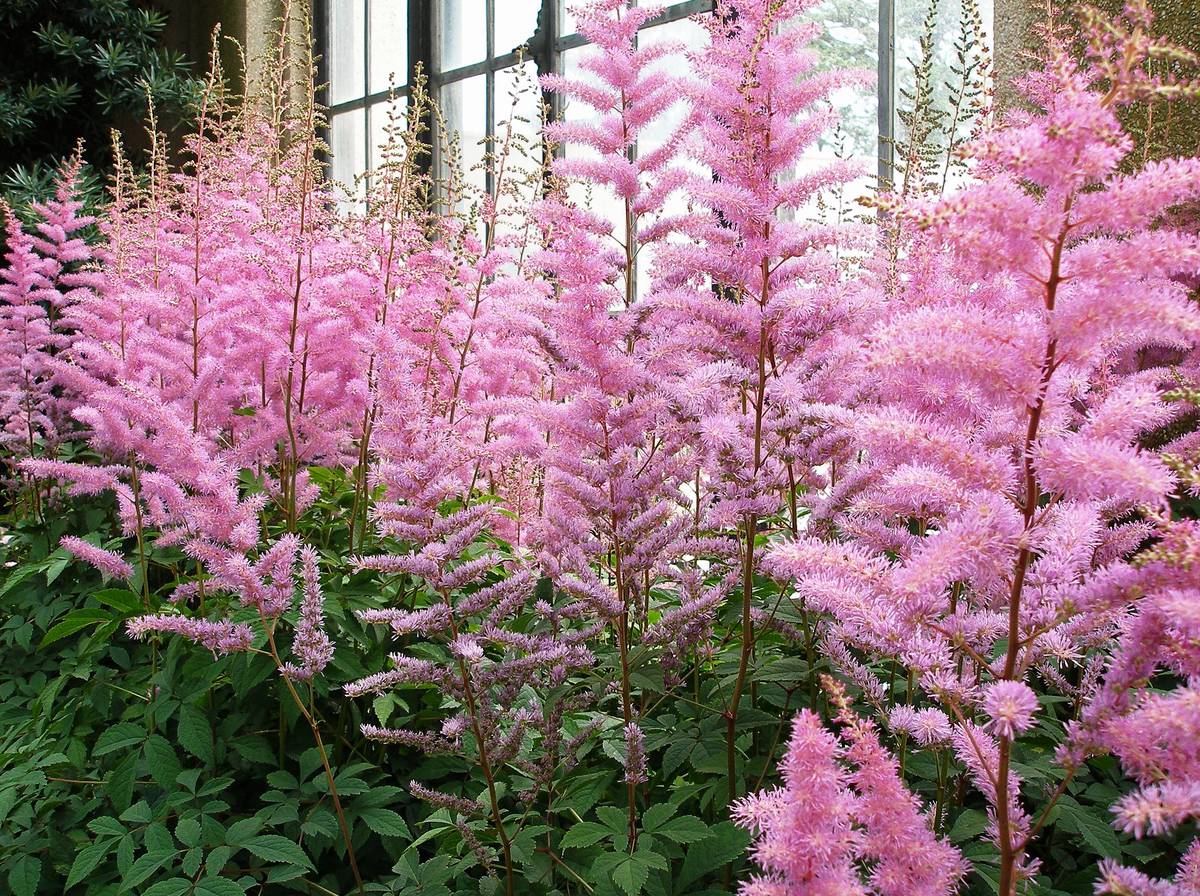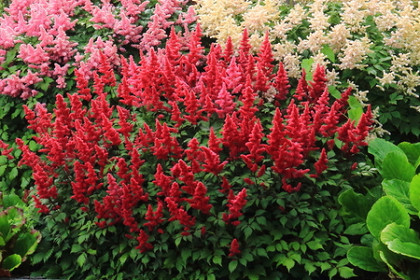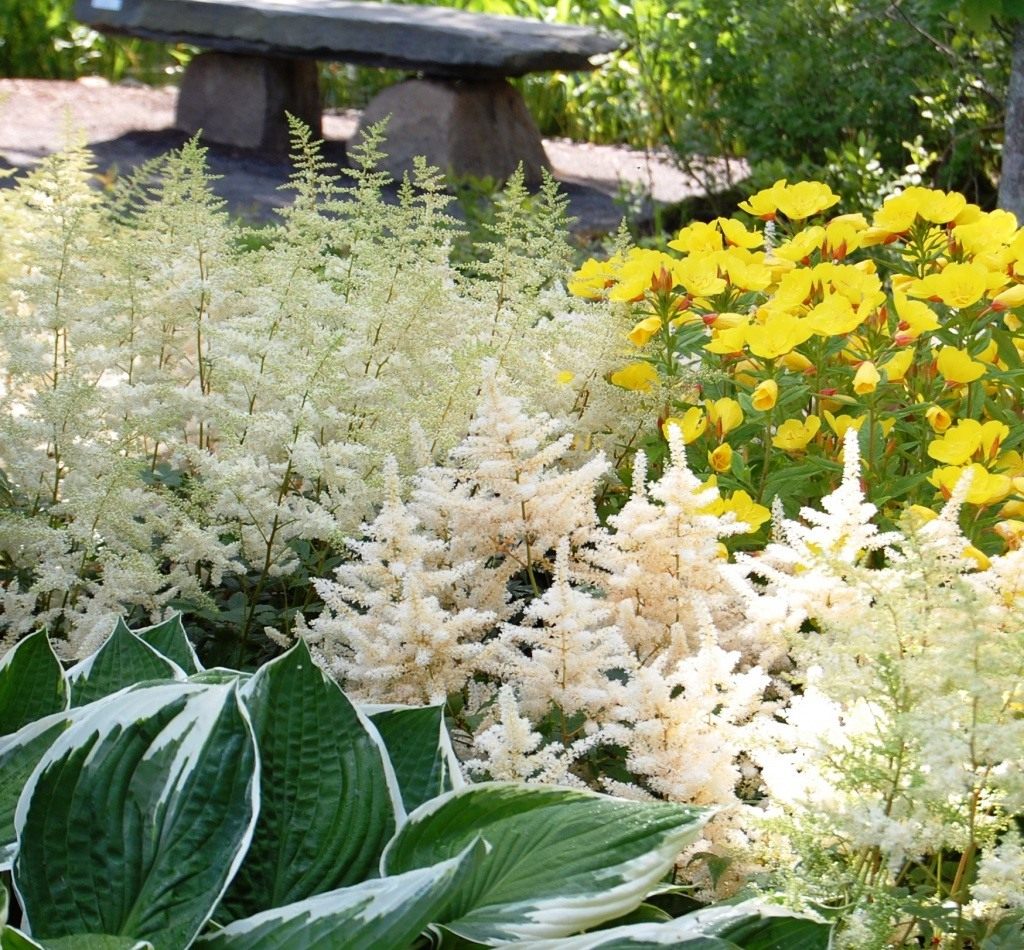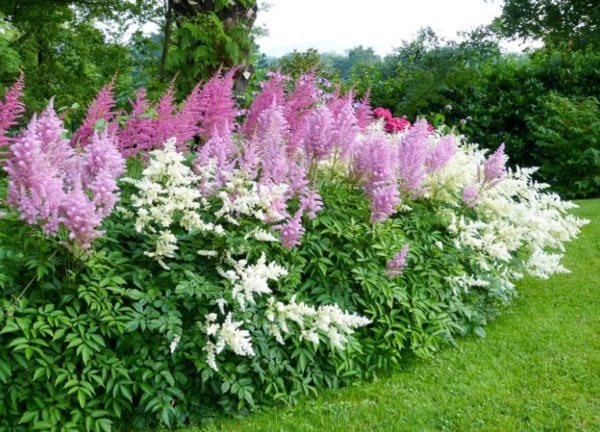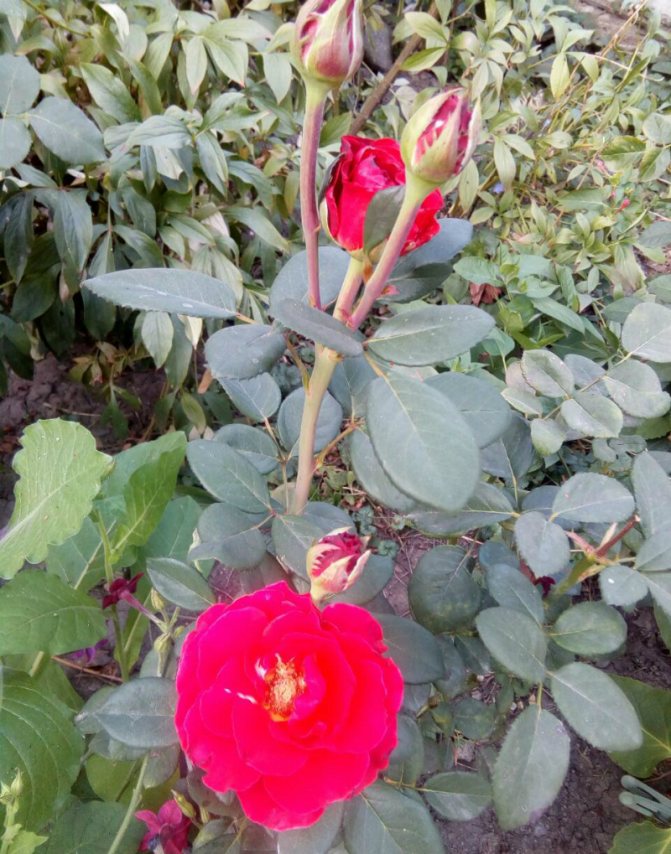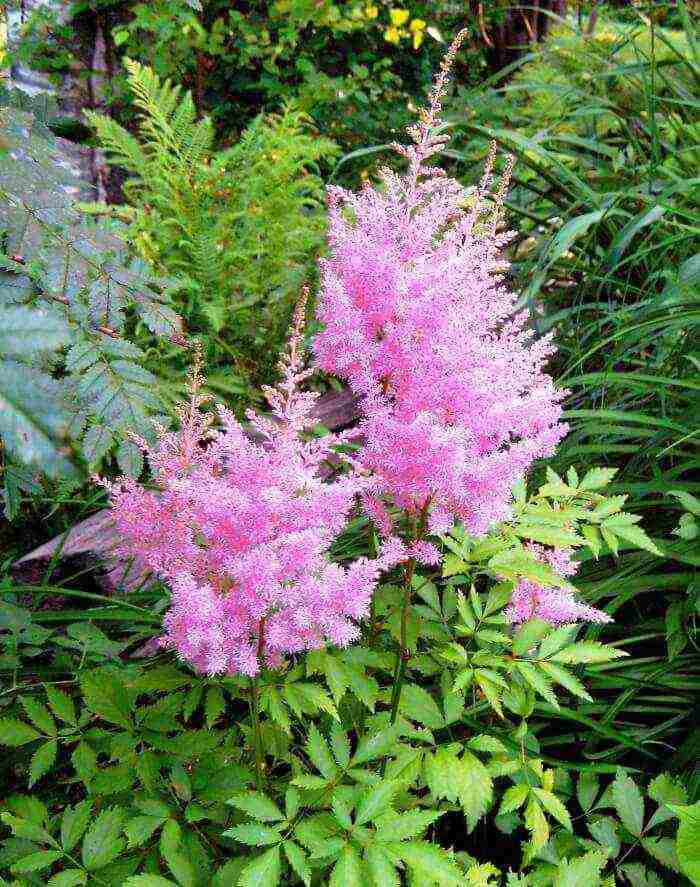Outdoor care for astilba
This flower culture is unpretentious, many call it a flower for novice gardeners and florists. But for all its not capriciousness and unpretentiousness, one cannot leave the plant without care. After planting astilba in open ground and subsequently, it is necessary to provide the plant with full care.
You need to take care of the plant as follows:
It is required to regularly huddle
The fact is that the rhizome grows upwards, which is why it is so important to huddle the plant. It is especially important to huddle in a flower bed on hot days and during the formation of inflorescences.
Astilba is a moisture-loving plant, therefore the most important moment of care after planting and subsequently is watering
Watering should be done in such a way as to maintain a moderate soil moisture. On hot days, watering should be done 2 times a day. Without the timely introduction of moisture, the plant may die.
After each watering, it is recommended to carefully loosen the soil around the flower (if the flower garden is not mulched).
It is recommended to prune the faded flower stalks on the plant (although it is not necessary to do this, as the plant looks attractive even after flowering!).
Weeds must be prevented.
Proper preparation of the plant for winter is also important. In late autumn, the stems should be cut at the root, and then mulching should be carried out, the layer thickness is 7-10 centimeters. If you live in regions with cold winters, it is recommended to cover the astilba, for example, with spruce branches, agrofibre.
If, during planting, the pit was filled with fertilizers, then fertilizing can be omitted for the first 1-2 years. Then, in early spring, you can apply nitrogen fertilizers, before flowering - potash, and before the end of flowering - phosphorus. In this case, before applying fertilizers, you need to water the soil with plain water, and then loosen it! You don't need to feed too much, otherwise the plants will begin to fatten, their leaves will begin to grow strongly, and the flowers will shrink.
If you are now in confusion, trying to decide which flower you want to plant in your garden, then this plant can interrupt the flour of choice. Moreover, if there are many shady places on your site without beautiful, decorative vegetation. Planting, cultivation techniques, caring for this crop in the open field are very simple. If you doubt your abilities, then you can simply carefully plant the rhizome in the garden, performing each step slowly, according to the instructions and rules.
Astilba bloom
The shape of the inflorescences is in the form of a pyramid, a rhombus and drooping panicles.
The flowering period of various species and varieties of astilba lasts from June to the end of August.
When the plant blooms (flowering period), the flower shape
By flowering, early, middle and late varieties are distinguished. The flowers are very small, which makes the inflorescences seem very light, delicate and fluffy. Astilbes are also very diverse in color. They are white, cream, various shades from light pink to dark-bard. Red astilbe is quite rare.
In the vicinity of astilbe, you can plant hellebore, euphorbia, heuchera, runny, aquilegia, junipers, yews.

Astilba has relatively few enemies. It can be affected by some nematodes and drooling pennies. The latter is capable of releasing a foam like saliva on the plant. In this foam, its leafhopper larvae develop. From this, the leaves become covered with yellow spots and wrinkle. In case of severe damage, the plant may die. The control is carried out by treating the ground parts with a systemic insecticide.
Gall nematode forms growths (galls) on the roots of the plant.Actually, the pest lives in the Gauls. Affected plants are inhibited in development and growth.
The strawberry nematode settles on the leaves, flowers and buds of plants. In these parts, the plant becomes covered with necrotic spots, and growth slows down.
Insectoacaricides are used for nematodes - drugs intestinal action... It is better to remove plants heavily infected with root nematode with a clod of earth, and disinfect the soil around.
How to plant astilba in the fall
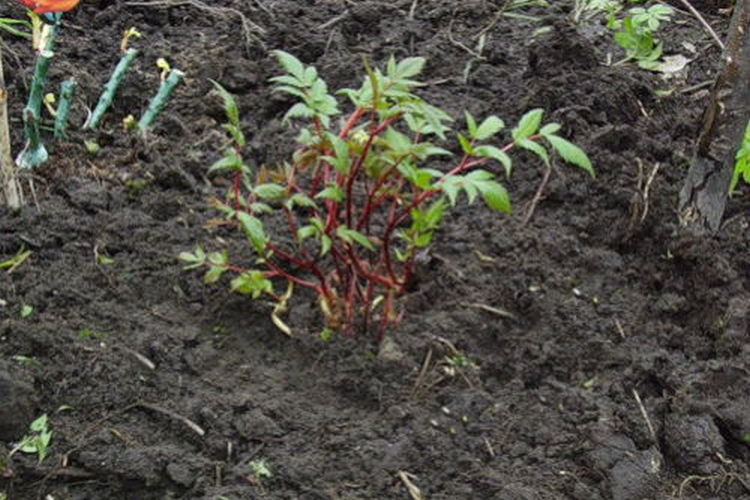
It is not always necessary to change the location of the bush. Sometimes you just need to plant a plant in a flower garden. Previously, to increase the number of bushes in the garden, you need to plant new shoots in the ground. Those who doubt whether it is possible to plant astilba in the fall should know that the plant is quite frost-resistant. And in the spring it will already be clear how strong the plant is and whether it could withstand the cold. If the plant dies in the spring, it is possible to plant new shoots and in a few months beautiful flowers will appear on the garden plot.
Choosing a landing site
Each of the astilba varieties requires certain conditions for full growth, vigorous flowering and numerous reproduction. The optimal conditions for caring for a shrub is considered to be an area with a sparse shade. Varieties that require a lot of moisture should be located near artificial reservoirs. From them, they will be able to take as much moisture as they need at a particular period. Light varieties are located in the open sun, however, they do not bloom as abundantly as other bushes.
Late varieties are also planted in the sun, while those that bloom in mid-July are best placed in the shade. The competent arrangement of different types of shrubs will allow you to create interesting landscape compositions.
Features of shrub reproduction

The bush propagates by seeds or by dividing the bush. Therefore, the question of how to plant astilba in the fall can be answered in two ways. The first involves planting seeds in cups for further planting in open ground. The second involves transplanting with bushes. Preparing everything you need, you should divide the rhizome into several seedlings and plant them in a new, previously prepared place.
When to plant astilba in the fall largely depends on the characteristics of the climate in a particular region. If you want to see a rapid flowering in a year, the seedlings should be planted only in the fall. However, you should start transplanting in early autumn, so that the plant has time to get stronger before long frosts. To do this, you need to prepare a pit for planting with a width of twice the volume of the root system. So you can protect the bush from damage during the planting process.
The planting hole cannot be less than 15-25 cm in depth. When deepening the sprout, the buds should not be sprinkled more than 4-5 cm. The pit should be covered with clay soil, since this type of soil is preferable for the plant. Its composition is fully compatible with its physical and chemical properties. It is better to loosen the soil around the hole in order to enrich it with oxygen and ensure the flow of air to the roots. In the loose layer, the most comfortable conditions for growth are formed. At the same time, air gaps should not be allowed. For this purpose, the soil should be tamped a little with a special tool or by hand.
Planting astilba in the fall should include fertilizing the bush with mineral fertilizers. To do this, pour a spoonful of the product into the planting hole.
Care in the first year of the bush's life
In the first year of a plant's life, buds should not be allowed to bloom. It is best to cut off the peduncles. With this care, all the nutrients will be used to enrich the root system, and the bush will reliably take root in a new place.
How to care for astilba in autumn? The soil around the bush should be watered and loosened regularly. This improves air exchange and improves root nutrition.If there is intense heat without rain in summer, watering should be done twice a day. Weeds that have appeared on the site must be removed in a timely manner. Weeding your garden will eliminate weeds and prevent harmful insects from entering your garden. Only after strengthening the root will he be able to independently displace weaker weeds within a radius of several tens of centimeters.
Astilba - care
Astilba is a perennial herb from the saxifrage family. The native land of the plant is eastern Asia and Japan, but they grow wild in North America. Due to the complexity of word formation, sometimes this plant is also called Astilbe. This genus unites 18 species and more than a hundred varieties. Some species are called "false spirea" or "false goatbeard". They can be grown together with other shade-tolerant and moisture-loving perennials (fern, volzhanka, astilbe).
Appearance
The height of the bush is from 15 cm to 2 meters. The leaves are twofold and three-pinnate, the stem is erect, the rhizome is dense. Inflorescences reach lengths from 10 to 60 cm are panicle apical inflorescences. Their color is varied: from white and pale pink to red and purple.
The plant's rhizome is powerful and branched, with numerous filamentous roots.
Varieties and types of astilba are divided by size:
- dwarf (up to 30 cm high);
- undersized (30-60 cm);
- medium-sized (60-90 cm);
- tall (90-150 cm).
Temperature regime
Astilba is a frost-hardy plant that can tolerate cold winters. The rhizome of the plant is stored under the snow, and the ground part dies off. New shoots appear in the spring. However, young plants may not be able to withstand temperature changes in spring, so they should be covered with peat or humus.
Illumination requirements
Astilba is a shade-tolerant plant, so it can grow in semi-shaded parts of the garden, where there is no direct sunlight. By choosing landing place - opt for areas that are shaded during the hot afternoon hours. A place near a reservoir is also ideal for them.
Astilba should not be left in highly shaded areas, it will bloom poorly.
Watering mode
In no case should drought be allowed, since this plant is moisture-loving. Watering is especially important during the flowering period (August-September).
If the plant grows in the shade, it is enough to water it once a day, but if it grows where there is an active evaporation of soil moisture, water it twice a day.
Drying of the soil is unacceptable, this will lead to a lack of flowering and wilted leaves.
Soil
Ideal soils for astilba are humus, medium and heavy loamy with a close occurrence of groundwater.
If you have light soils, you can add rotted manure or garden compost to them. You can also clay soils - for several years, add 1-2 buckets of clay and mix with your soil. This will increase its cohesion and help to retain the soil moisture that plants need.
It is important that the soil is fertile - apply organic fertilizers (rotted manure or compost) to improve the soil
Fertilizers
Feed astilba according to the following scheme:
- In the spring, apply nitrogen fertilizers; when hilling, add humus;
- In the summer (in June) - potash fertilizers. ½ liter of solution per bush (prepare the solution as follows: dissolve 2 tablespoons of potassium nitrate in 10 liters of water);
- In autumn (before the end of flowering) - apply phosphorus fertilizers, 20 grams of superphosphate per bush.
After fertilizing, the soil must be loosened and mulched.
Astilba - planting and transplanting
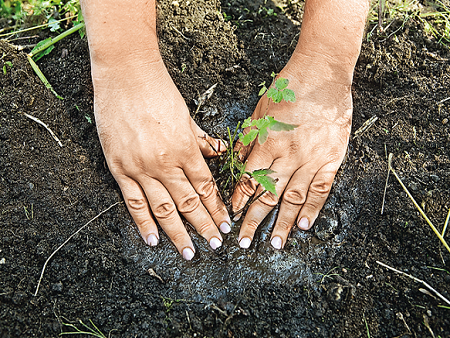
For the correct landing of the astilbe, you need to do the following:
- Dig up the ground, remove the roots of weeds and fertilize with rotted manure, peat and compost;
- The distance between tall varieties requires a distance between bushes of 50 cm, and undersized varieties - 30 cm;
- Dig holes 25-30 cm wide and deep.Add a handful of bone meal and ash, 20 g of complex mineral fertilizers. Stir and pour;
- Mulch the planted astilbe (for example, rotted sawdust or leaves). The mulch layer should be 3-5 cm thick.
Astilba transplant
With very good care, astilba can live in one place for up to 20 years, while the average time spent in one place is 5-7 years.
Once every 5 years, overgrown bushes should be at least slightly reduced (to rejuvenate them) using the method of dividing the bush.
The transplant should be carried out in the spring, before the plant starts growing. Divide the rhizome in half and plant, compacting and watering the soil.
If you are replanting a plant in the fall, then when replanting, it is better to remove all the leaves and leave only the shoot with buds. Compact the soil and water (whether or not watered before replanting) to remove air pockets.
Transplantation is necessary for perennial plants, since during long-term cultivation in one place, harmful substances secreted by the plant accumulate in the soil, and parasites take root, and all this is harmful to plants.
When is it better to transplant astilba
The shrub can be transferred around the site throughout the season, but there is always a risk of plant death. When transplanting, one should take into account the climatic conditions of the region, the season.
Terms of the procedure:
- in early spring, when the buds begin to swell;
- in the summer, when the astilba releases six buds;
- in the fall, after the end of the flowering of the perennial.
The time of year and the literacy of transplanting a bush depends on how quickly the plant adapts after suffering stress.
When to transplant astilba in spring
After the frost has receded, it is recommended to change the place of residence for those species of astilba that bloom in late summer and early autumn. The best time for transplanting is April or early May.
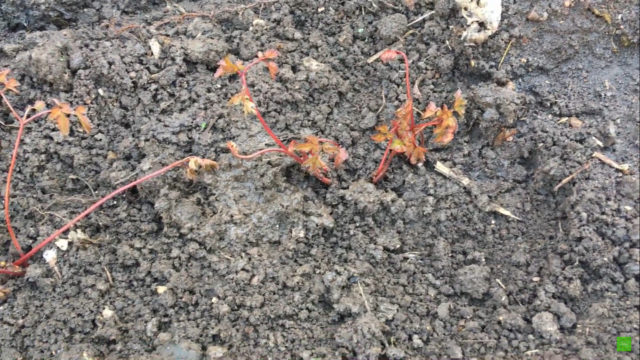 The plant will bloom in the same season, if you provide it with abundant watering, but it is better to remove the buds from a weakened shrub
The plant will bloom in the same season, if you provide it with abundant watering, but it is better to remove the buds from a weakened shrub
Benefits of spring transplant astilba:
- the culture tolerates the procedure more easily;
- the root system grows rapidly;
- the perennial manages to strengthen the immune system during the season.
Is it possible to transplant astilba in the summer
Transplanting an adult plant in the summer months is not recommended: astilba may die. But if the procedure is necessary, then the whole bush should be transferred to a new place, without dividing it into parts. At the end of the manipulation, the perennial needs enhanced care: it needs to be shaded, watered abundantly, and the crown should be sprayed with cool water.
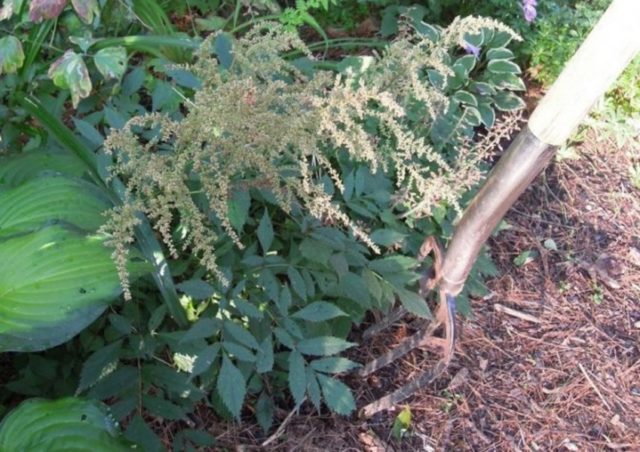 If buds have already appeared on the bush, then they need to be cut off at the end of the transplant.
If buds have already appeared on the bush, then they need to be cut off at the end of the transplant.
When to transplant astilba in the fall, is it possible in October
The optimal time for the procedure is the last weeks of August and September. When transplanting, it is necessary to take into account the weather conditions, since the plant needs time for rooting, at least 1.5 months.
In the southern regions, it is possible to transfer astilba to a new place in October, when the plant enters the dormant stage.
When to transplant astilba in the Moscow region and other regions
The culture is distinguished by frost resistance and a strong immune system, therefore, with proper transplantation, it takes root well. But in order to reduce the risks of plant death, the region of growing astilba should be taken into account.
The Moscow region is characterized by a changeable climate, but the shrub quickly adapts in fertile soil, so in this area it can be transplanted from spring to autumn.
After the snow melts, the optimal time for the procedure is April-May. In the fall, astilba should be transplanted in August or early September.
In Siberia in the Urals, astilba should be transplanted taking into account the weather. Since early frosts are typical for this strip, it is recommended to postpone all procedures to August.
In the spring in the northern regions, astilba can be transplanted only after the soil warms up to + 10 ° C.If the spring is protracted, then you can shift the dates from May to the first half of June. It should be borne in mind that with such a transplant, flowering will not occur this year.
In the southern regions, gardeners prefer to transfer astilba to another place in April, so that the flower will adapt safely. In autumn, the ideal time for manipulation is October.
WHERE TO BUY ASTILBA SEEDS
 The Scientific and Production Association "Sady Rossii" has been introducing the latest achievements in the selection of vegetable, fruit, berry and ornamental crops into the wide practice of amateur gardening for 30 years. In the work of the association, the most modern technologies are used, a unique laboratory for microclonal reproduction of plants has been created. The main tasks of NPO Sady Rossii is to provide gardeners with high-quality planting material for popular varieties of various garden plants and novelties of world selection. Delivery of planting material (seeds, onions, seedlings) is carried out by Russian post. We are waiting for you for shopping:
The Scientific and Production Association "Sady Rossii" has been introducing the latest achievements in the selection of vegetable, fruit, berry and ornamental crops into the wide practice of amateur gardening for 30 years. In the work of the association, the most modern technologies are used, a unique laboratory for microclonal reproduction of plants has been created. The main tasks of NPO Sady Rossii is to provide gardeners with high-quality planting material for popular varieties of various garden plants and novelties of world selection. Delivery of planting material (seeds, onions, seedlings) is carried out by Russian post. We are waiting for you for shopping:
An amazing plant with incredibly bright flowers is slowly beginning to win a place for itself in the personal plots of our country. The name of this perennial is astilba. One of the main advantages of this truly mesmerizing plant is the huge variety of varieties. Throughout the entire flowering period, the plant retains its decorative effect, thanks to its amazing leaves. In wildlife, astilbe can be found in East Asia and North America. A total of 30 plant species are known, 10 of which are successfully cultivated in our gardens.
Of ten species, breeders were given the opportunity to grow a large number of varieties. Conventionally, all of them can be divided into dwarf (up to thirty centimeters high), undersized (from thirty to sixty centimeters), medium tall (from sixty to ninety centimeters) and tall (from ninety centimeters to one and a half meters). In nature, astilba prefers to grow along river banks and on forest edges. One of the main advantages of astilba is its exceptional hardiness and increased frost resistance, so the plant can survive even the most severe winters. But still, flowers must be prepared for the onset of the cold season.
Pests
Despite the fact that astilbe is very resistant to many diseases, and pests are not afraid of it, sometimes there are such "troubles" as the formation of brown and yellow spots on the leaves affected by the slobbering penny. These pests suck out the juice from the leaf tissue, thereby destroying not only individual leaf plates, but the entire bush. You can fight the penny by using various insecticides, for example, "Karbofos".
In addition to the penny, nematodes (strawberry and gallic) can also attack astilbe. The first causes deformation of the leaves, and the second causes significant damage to the roots. These pests are poorly tolerated by drugs such as "Fitoferm". Using it, you can completely get rid of nematodes.
Astilba is a long-flowering perennial unpretentious plant of the Stonefragment family. It takes pride of place among landscape design specialists and summer residents. Up to 200 varieties are known (tall, dwarf, midget, hybrids). They are different in color (from snow-white to crimson) and shape (density of inflorescences, structure of leaves).
Tips & Tricks
- The plant actively grows in one place for up to 5 years, then begins to gradually fade;
- You can transplant the bushes not only in spring or autumn, but also in July (if necessary);
- Reproduction of the bush is the main reason for the autumn transplant. Experienced summer residents in the fall plant astilba by the seed method;
- The place of root division must be treated with ash to prevent rotting;
- The first year after transplanting, the plant is weak, therefore, peduncles should be removed to strengthen the roots;
- The main feature of astilba is the growth of roots in the upper soil layer. In summer, plants should be watered frequently and plentifully, with a thick layer of mulch in advance.In addition to mulching, hilling protects the roots of the plant;
- In autumn, the above-ground part of the bush should be pruned, leaving cuttings 3-4 cm in size.It is necessary to add mulch to protect the roots from frost.
Note! Astilba care, transplantation and reproduction is a simple process. The flowers are frost-hardy, but temperature changes can damage the culture.
After pruning, it is a good idea to cover the mulched roots for the winter with spruce branches.
With the help of flowers, you can form a variety of compositions. The plant sets off lawns and needles. Landscape designers actively use astilba in parkland.
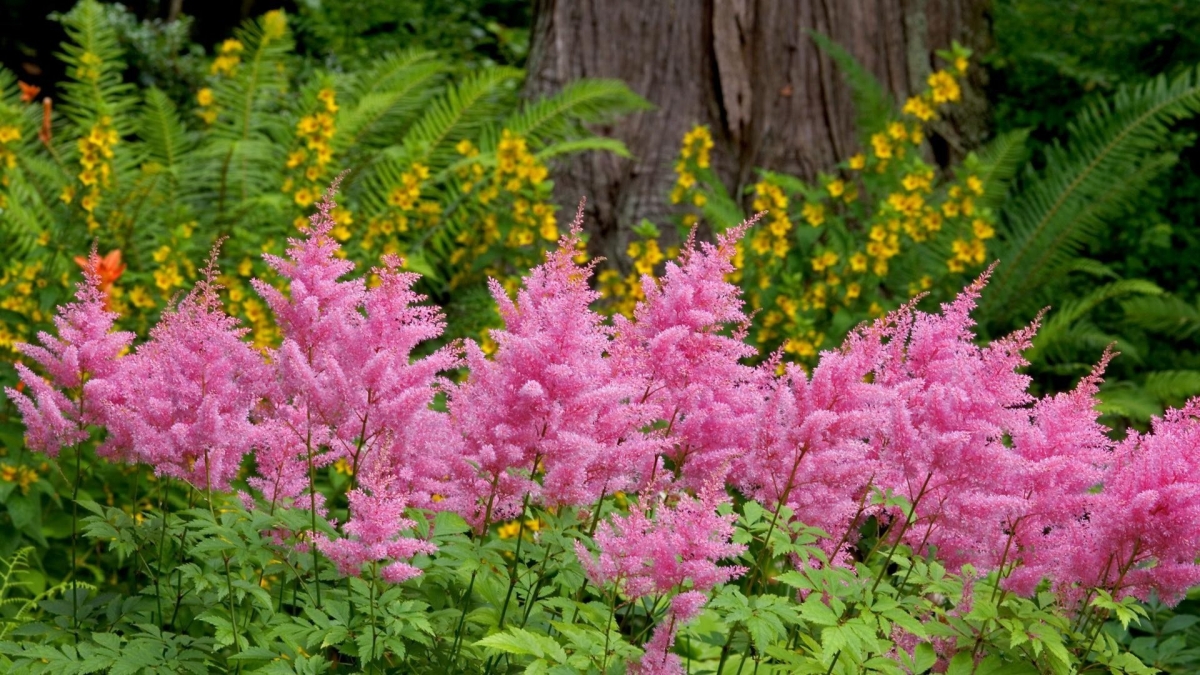
Astilba, a perennial decorative flower, is loved by gardeners and is actively used in landscaping their plots. Practical plant, no need for annual sowing of seeds, growing seedlings.
It is enough just to provide proper care, which significantly saves time and effort. However, initially delighting with its decorative effect and good growth, over time, astilbe blooms less, it requires periodic rejuvenation. In addition, it can capture adjacent areas. How is the astilba transplant carried out in the fall and what care measures does she need after that?
Transplant process
The direct transplanting process is not difficult:
- The prepared planting hole, where fertilizers have already been added, must be filled with water.
- The astilba bush is dug in such a way as to preserve all the roots along with the earthy clod.
- Immediately transferred to a prepared pit, placed in the center and covered with fresh soil. The planting depth should be such that a soil layer of 3 cm is obtained above the recovery buds.
- Water the transplanted plant abundantly.
- Mulch the surface of the earth around the bush with a layer of 2 cm to reduce overheating, to maintain looseness and moisture in the soil. In addition, the procedure will help avoid the appearance of weeds in the neighborhood and create favorable conditions for the plant for wintering.
- When transplanting several bushes at once, it is necessary to maintain a distance of at least 40 cm between them. Then the flowering will be lush and the foliage will grow well.
- A partial transplant of astilba is also allowed, when the plant is not completely dug up. The necessary piece is separated from the bush, the place of trimming is covered with wood ash, and fresh soil is added to the resulting hole. Delenka is transplanted to another place. Already next year, both parts of the astilbe will delight with their flowering.
Landing
To grow lush and beautiful flowers, you need to know when to plant. Also, where exactly you plant plays a very important role. Florists are convinced that the optimal time is spring or autumn.
In the spring, when frost is no longer foreshadowed, astilba can be planted immediately in open ground. After 30-40 days, you can enjoy flowering.
Planting time also depends on the climatic zone.
If you want to get bloom next year, it is better to plant it in the fall. They do this after the sultry and hot days are over.

The astilba planting hole is prepared deep. It should be several times larger than the root system of the plant. The depth is made at least 15 centimeters. The roots of the flower are very delicate, and they should be deepened very carefully. The soil should be loose and fertile.
After planting, the hole is filled up. Do this by ramming, then all air layers will be removed.
In order for astilba to take root well and endure the winter painlessly, flowering should not be allowed. Peduncles are cut off when they appear, then the plant does not spend energy on flowering, and they go to the formation of the root system and buds.
After planting, regular weeding should be carried out, without giving the weeds a chance to hatch and take away nutrients from the soil. With the growth of astilba, the need for weeding will disappear.
Mulching plays a very important role.It is the mulch in the hot period that does not allow moisture to evaporate quickly and maintains it. It is also necessary for the wintering of the plant. If the climate in your strip is warm enough, then mulching is not necessary.
Bushes that are more than 4 years old endure winter frosts much more difficult than "young people". The reason for this is the roots, they appear more and more on the surface every year. Build a frame for these flowers for the winter. Fill it completely with dry foliage. Pull the spunbond over the top. That the vaga did not accumulate inside, cover the structures with a film, and so that it does not get blown away by the first gust of wind, press on the sides with bricks.
How to plant astilba and when
Astilba is a crop that can be replanted throughout the season. In the summer, the bush is transplanted if it clogs up neighboring plants. In this case, the process itself is carried out together with a clod of earth. After transplanting the plant, you should ensure abundant watering.
For transplanting flowers, you should choose a shady place, preferably on the north side of the site, next to a pond. It grows on almost any soil, it takes root especially well on loam.
Prepare the site before planting. To do this, the soil must be loosened, weeds weeded, moistened and fertilized (with rotted manure, ash, humus). Planting holes are dug at a distance of 30 cm and a depth of 20 cm.
After planting, the roots are covered with earth and tamped so that air layers are removed. Then abundant watering is required. Sprinkle the roots with mulch on top, which helps the plants survive frost and drought. In hot weather, mulch does not allow moisture to evaporate quickly.
How to transplant astilba? The bushes are propagated by two methods: seed and vegetative. An easier method is transplantation using divisions. The root should be divided so that there are at least 4 buds on each piece. You need to cut the roots with a sharp object so as not to harm the plant. Young bushes are easily divided by hand. Next, the roots are planted in the prepared soil at a distance of 30 cm. With a dense planting, the plant does not bloom well, and the leaves do not grow.
For transplanting flowers, you should choose a shady place
When astilba is propagated by the seedling method, varietal characteristics are not always preserved. In March, seeds are sown in a nutritious substrate. After the appearance of the third leaves at the sprouts, they are dived one by one into separate cups. They are planted in open ground in May. Seed propagation is usually used by breeders to obtain new plant species.
After planting flowers, the soil should be weeded regularly. With the growth of astilba, the need for weeding gradually disappears.
- The plant actively grows in one place for up to 5 years, then begins to gradually fade;
- You can transplant the bushes not only in spring or autumn, but also in July (if necessary);
- Reproduction of the bush is the main reason for the autumn transplant. Experienced summer residents in the fall plant astilba by the seed method;
- The place of root division must be treated with ash to prevent rotting;
- The first year after transplanting, the plant is weak, therefore, peduncles should be removed to strengthen the roots;
- The main feature of astilba is the growth of roots in the upper soil layer. In summer, plants should be watered frequently and plentifully, with a thick layer of mulch in advance. In addition to mulching, hilling protects the roots of the plant;
- In autumn, the above-ground part of the bush should be pruned, leaving cuttings 3-4 cm in size.It is necessary to add mulch to protect the roots from frost.
Note!
Astilba care, transplantation and reproduction is a simple process. The flowers are frost-hardy, but temperature changes can damage the culture.
After pruning, it is a good idea to cover the mulched roots for the winter with spruce branches.
With the help of flowers, you can form a variety of compositions. The plant sets off lawns and needles. Landscape designers actively use astilba in parkland.
Ease of maintenance is probably one of the main criteria that can make a plant a favorite of gardeners. For example, astilbe grows well in a shady garden, decorating them with unusual inflorescences of different shades. They do not require increased attention to themselves, and if you follow the elementary rules of agricultural technology, you can get lush and spreading bushes.
Correct care
After the successful planting of the plant, it should be provided with proper care, so that flowering could please for many years.
When choosing a place to plant, consider when the plant will begin to bloom. Dates may vary from late June to September. Early and late varieties are not whimsical to conditions, they will bloom beautifully both in the shade and in the sun. But mid-flowering plants prefer the shady zone, the scorching sun will significantly reduce the flowering time.
Thanks to different varieties, you can create a composition on your flower bed that will bloom throughout the warm period.
Astilbe will not tolerate a prolonged drought, but in moist soil it grows magnificently. Able to tolerate stagnant water. Will ruin the flowers:
- Solntsepek.
- Lack of constant watering and rain.
- Bad soil.
Mulching plays a very important role in the life of flowers:
- Protects the root system from overheating.
- Retains moisture.
- Allows the soil to remain loose.
- Prevents weed germination.
- Creates the necessary conditions for the winter period.
Mulching is carried out immediately after planting flowers, the layer should be about 5 centimeters.
Astilba will not do without fertilizers. She needs phosphorus and potassium for full flowering and development. The first feeding is carried out in the spring, the second - during the budding period, the third - in the fall, when the plant has faded. The soil is carefully loosened and mulched.
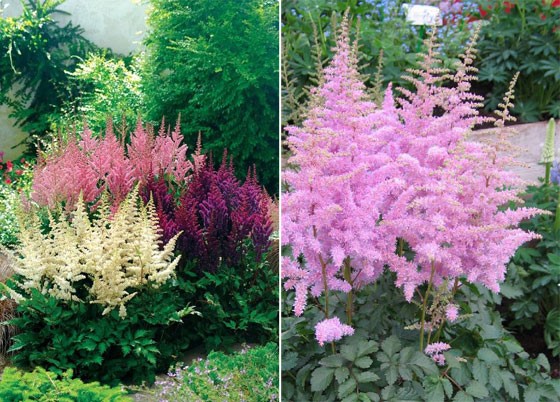
If the planting conditions were favorable, and the care was appropriate, the flowers develop very quickly and grow better. Old roots will displace young ones, the plant will begin to wilt, flowering will decrease, and the inflorescences themselves will be very small. Therefore, a transplant is required every 3-5 years. The period depends on the variety and the rate of growth.
Sometimes, astilba may not be transplanted for a long period, about 20 years. In this case, the care should be more attentive.
Interesting fact!
If you plant astilba of different varieties in the garden, you will get a riot of colors. When only one color is inherent, the effect of incredible splendor and volume will be created. You can create other compositions on your site, which one is decided by each grower individually.
Astilba is a long-flowering perennial unpretentious plant of the Stonefragment family. It takes pride of place among landscape design specialists and summer residents. Up to 200 varieties are known (tall, dwarf, midget, hybrids). They are different in color (from snow-white to crimson) and shape (density of inflorescences, structure of leaves).
Astilba: planting rules and plant care in the fall
You can add 500 g of wood ash to the mixture and mix thoroughly as well.
Having dipped in a chatterbox, the delenki are folded into boxes for drying on the roots of a layer of clay. Delenki processed in this way can be stored without over-drying for a long time, which is sometimes used when sending planting material of peonies by mail. After planting, the crust protects the seedling from rot, and the growth substance (heteroauxin) stimulates the formation of a young root system. Excellent results are also obtained by long-term storage and shipment of cuttings in moss.
If the planting is not carried out immediately, the planting material is placed in a shaded hole in the ridges with good garden soil, where it can stay for one to one and a half months before planting. In dry weather, the dug-in seedlings are periodically watered.
Sometimes flower growers divide the bushes into large parts with six or more renewal buds.They leave a significant part of the root system without cutting, believing that such a plant will grow better and develop faster. Indeed, in the first year, the plant develops rapidly and may even produce several good flowers. However, the rapid development of such a plant occurs due to the nutrients accumulated by old roots. The formation of young suction roots practically does not occur, which negatively affects the development of the bushes in subsequent years. In addition, uncleaned roots rot, as a result, in the second year after planting, the plants begin to hurt and by the third year they may die.
>> Next page = >>>

